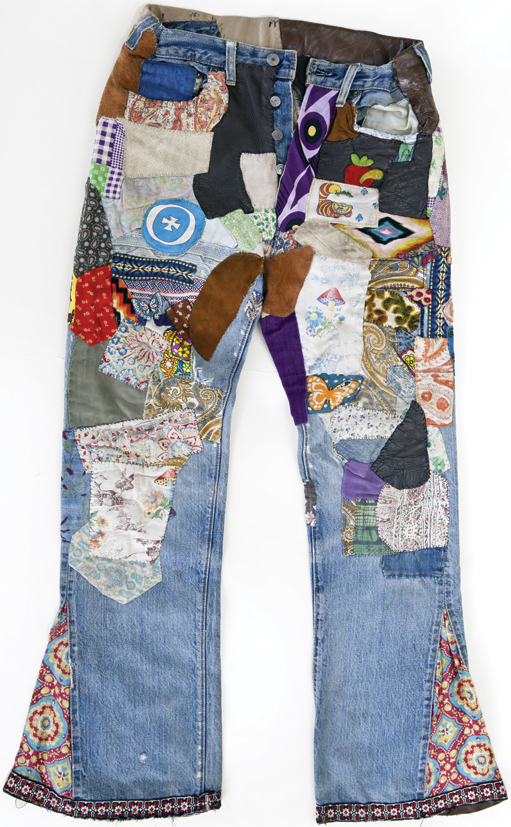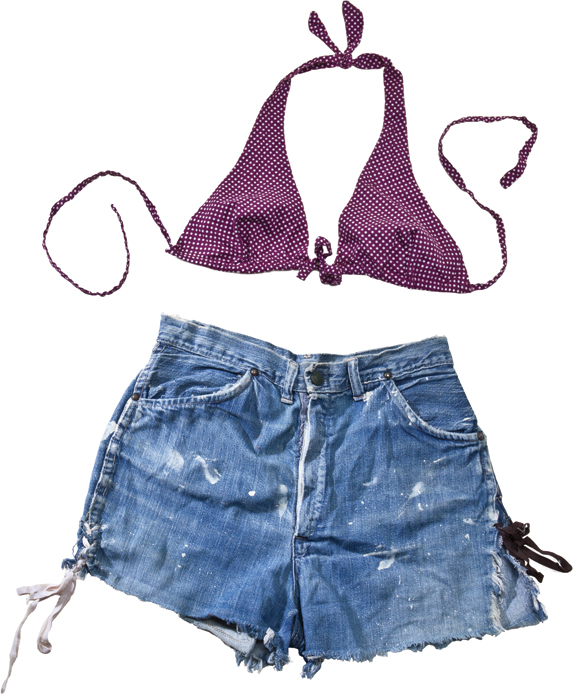Visualizing History: Anti-Establishment Clothing
Printed Page 782 Chapter Chronology
Visualizing History: Anti-Establishment Clothing
Anti-Establishment Clothing

Youthful hippies embraced distinctive and colorful clothing to reflect their identities as rebels in the new counterculture emerging in the 1960s. The well-worn artifacts shown here typify the self-expression of young people who scorned the older generation's button-down shirts, business suits, teased bouffant hair, sheath dresses, and all that they stood for.
Hippie first emerged as a new word in 1965, derived from hip and hipster, slang words from the realm of jazz and beatniks. But the teenagers and young adults morphing into hippies came disproportionately from the middle-class suburbs that symbolized the success of the American dream. Hippies rejected the classic aspirations of steady work, home ownership, and consumer goods. In the summer of 1967, some 100,000 of them converged on the Haight-Ashbury district of San Francisco, lured by the call of the "Summer of Love." Those who stayed beyond the summer lived in voluntary poverty, relying on panhandling, crash pads, soup kitchens, and free clinics to support their freedom from middle-class values. Hippie enclaves sprouted in low-rent districts of cities and in rural communes.

Clothing provided an obvious way for hippies to express their disdain for the "Establishment." What other attitudes can you decode in this pair of bell-bottom jeans? Is it is a men's or a women's garment? Consider the sewing expertise required to repurpose straight-leg pants into the bell-bottom flare. Who among the hippies was trained to do that work? Think about the typical stress points in pants. Are the patches functional or decorative?
The fringed jacket illustrates two common themes: the Native American/cowboy-style fringe, and the red-white-blue motif. How might mainstream patriots have regarded this jacket? Was it intentionally inflammatory, or might the wearer be expressing an alternative form of patriotism? Most states had decades-old laws forbidding the desecration of the U.S. flag. Would this jacket have put its wearer at risk for arrest? What was rebellious about the denim shorts and halter top? Can you think of any time or place when such immodest dress would have been acceptable? Can you guess how high school dress codes responded to these innovations? How the fashion industry responded?

Authentic hippie clothing remains rare; most of it probably fell apart and was junked by the mid-1970s, with occasional garments showing up in thrift stores or vintage clothing shops. By the 1980s, patterned bell-bottoms and daring short shorts looked as old-fashioned as a flapper dress from the 1920s. Nevertheless, mainstream designers copied many of the hippie styles, and the impact of counterculture clothing on conventional dress was profound, leading within a few years to a much greater informality in everyday attire, even among the Establishment.
SOURCE: Jacket: Collection of Mark Hooper; Jeans: Nancy Gewirz/Antique Textile Resource; Halter and shorts: Picture Research Consultants & Archives.
CONNECT TO THE BIG IDEA
